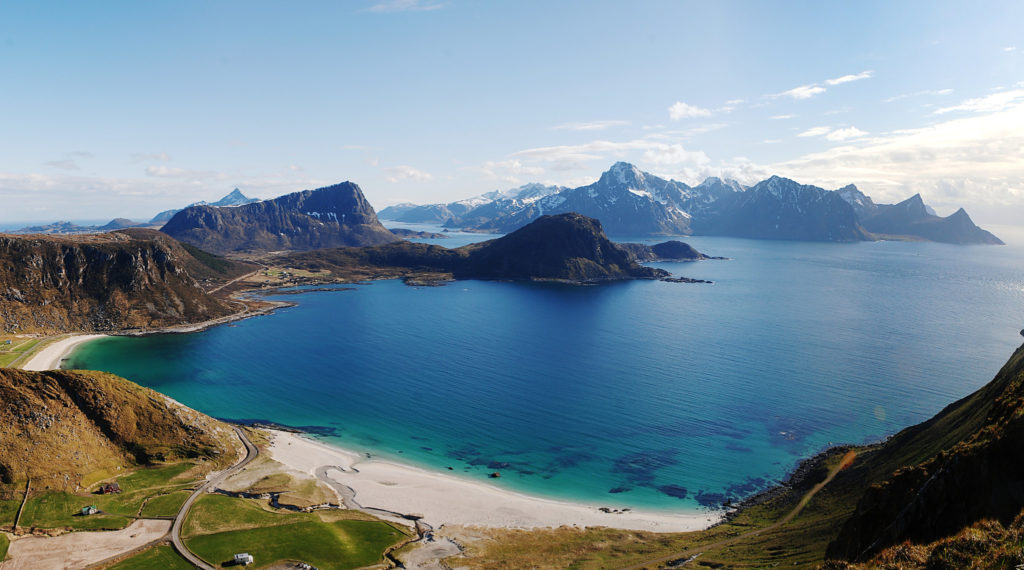
Lofoten Islands, Norway, have sharp mountain peaks and lonely withdrawn fjords breaking the horizon among the often stormy seas. The Lofoten Islands offer some of the most dramatic landscapes in the world. Sitting at the northwest coast of Norway, deep inside the Arctic Circle, these islands grant you many solitary walking trails. Al illuminated by the never-setting midnight sun, with spectacular views no other place in the planet can offer. They might be one of Mother Nature’s most stunning and breathtaking creations, and they are just waiting for you to explore them.
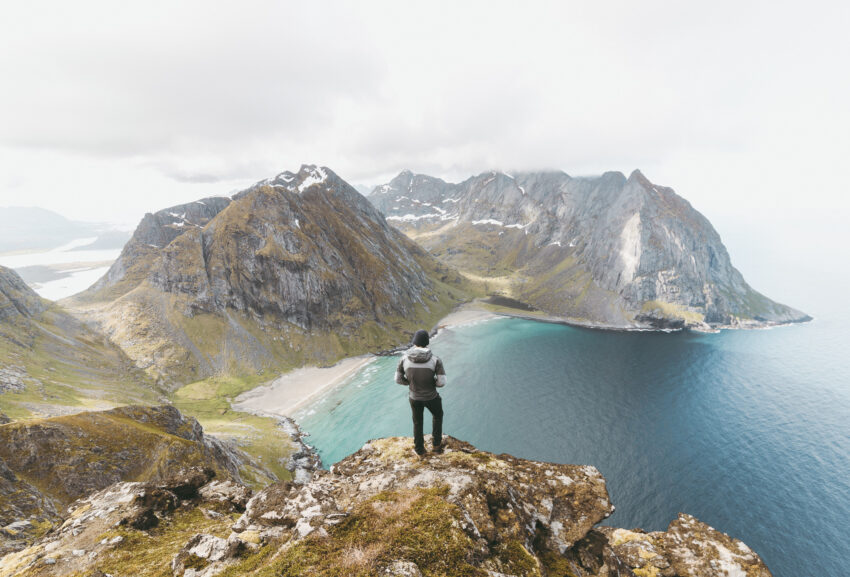
The moon-shaped archipelago extends over 200 km right into the turquoise Norwegian Sea. The main islands of Austvågøy, Vestvågøy, Flakstadøy, and Moskenesøy make up the Lofoten chain. Besides, another two distant ones make up the chain: Værøy and Røst. Even though they stand deep inside the Arctic Circle, the Gulf Stream gives the islands an incredibly delicate weather given their high latitude. You’ll be surprised to be in the middle of winter, and rarely feel the temperatures drop below zero Celcius.
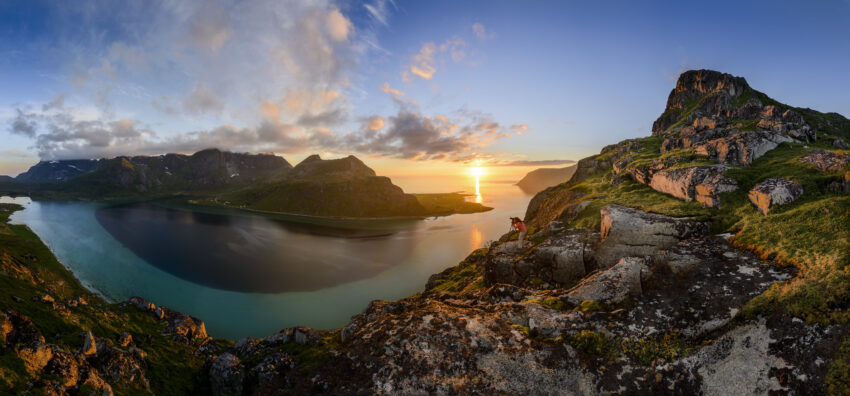
Activity/Place Highlights
The cozy rorbu
The islands are dotted here and there by maroon, wooden bunkhouses called rorbu. These refugees were built around the 12th century as an affordable settlement for fishermen. Back then, fishermen filled the islands when the fishing season started. Now, these rorbu have been transformed into comfortable cottages for visitors to stay. Especially those at Mortsund, near Leknes on the main islands of Vestvågøy. You can find rorbu at the border of the islands, facing the water’s edge. In fact, they are the best homely base and starting point of many trails.
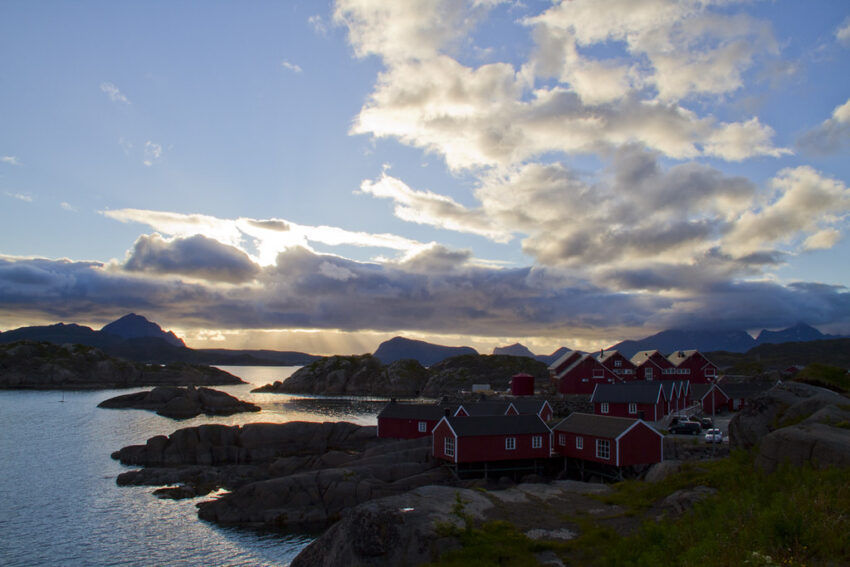
Peak of Heia
The peak of Heia, rising right behind Mortsund, is perfect for a relaxed, brief first walk. Here, you will get a widespread view over the rocky smaller islands and the slowly flowing waters at Burnesfjorden. The hike then takes you to the southwest, along the best points of the Lofoten chain.
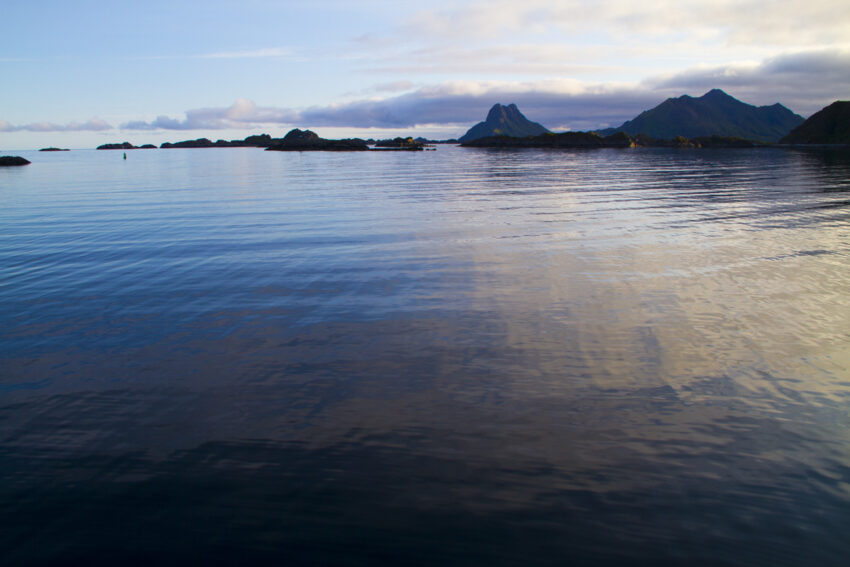
The sun, at midnight
Of course, the four main islands offer outstanding walking opportunities. But if you head to the southwest end of the group, you get to the most fascinating, serene walks. One of the highlights of the Lofoten Islands and their walks is seeing everything swathed in the ethereal light of the midnight sun. Many places on the outer edge of the Lofoten chain happen to be the perfect spot to admire that unique spectacle. One of the most impressive trails runs alongside the shoreline, from Eggum to Unstad, on Vestvågøy.
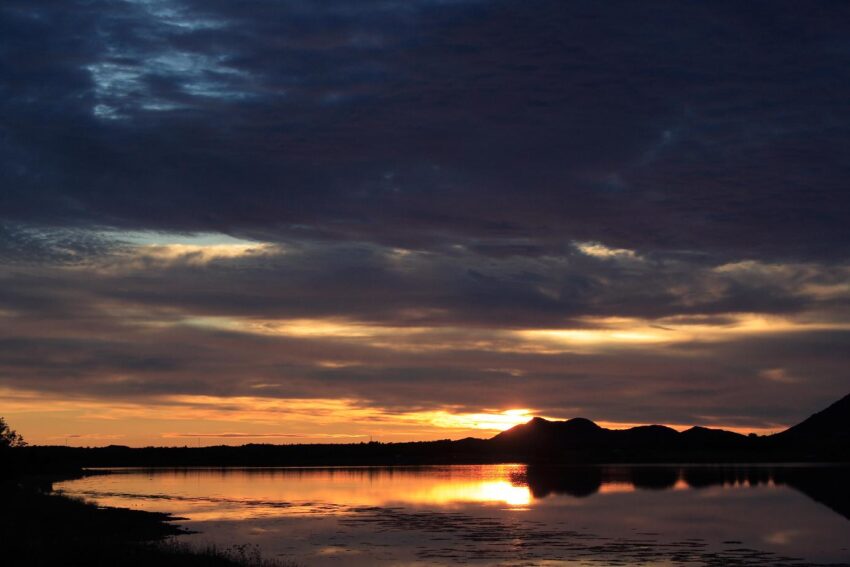
Source by ErKomandante on Flickr – Under Creative Commons license
The Eggum village and Head
The Eggum village, a rainbow of colorful wooden houses, seems to be captured in between the Norwegian Sea and the towering, sheer cliffs of the Mustaren peak. Not long after leaving Eggum behind, the path passes by the sculpture of Head, a visual-illusion built by the Swiss artist Markus Raetz. It certainly looks like a normal head from one point of view. However, once you walk around it, the sculpture seems to flip upside down completely and many other face shapes appear.
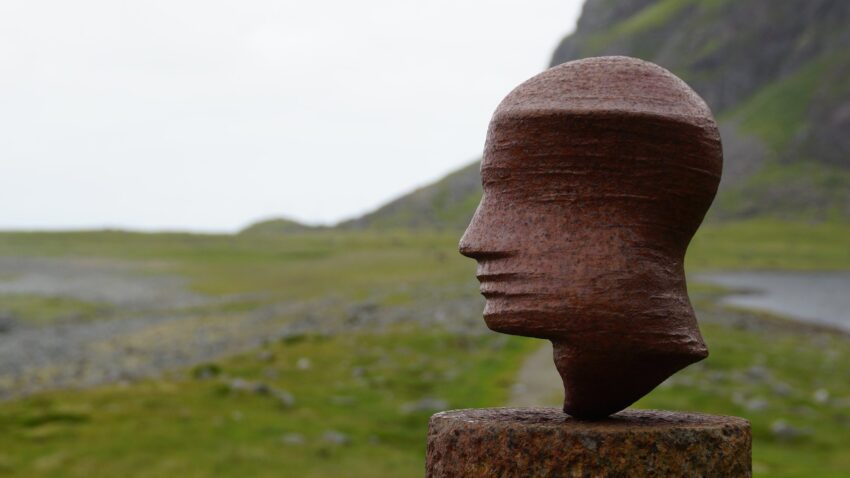
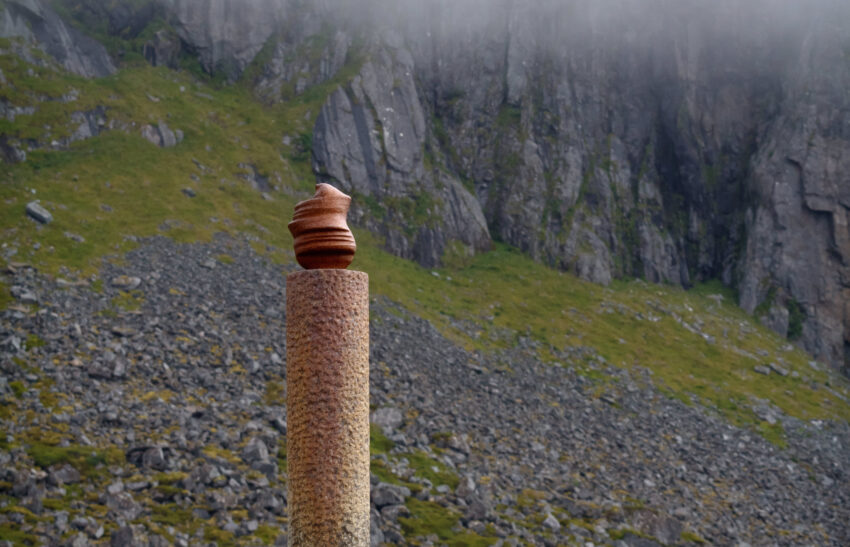
With no other islands to the northwest breaking the flat horizon, the trail offers an endless view of the midnight sun. The soft sunlight is a mixture of soothing yellow, orange, pink, purple and blue tones. As it bounces off the cliffs, it creates a natural, relaxing kaleidoscope of colors.
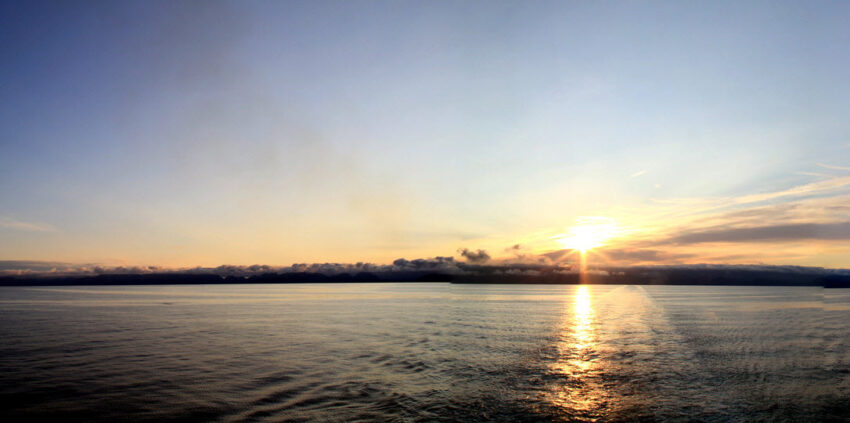
Vestvågøya island
Go to the west of Leknes, further south, and follow another short walk along the seaside. An old gravel road from Haukland to Utakleiv grants you with views of beaches with pristine, white sand and the rocky headland at Tåa. This secluded area is rarely visited by foreigners, but is one of the local’s favorite places. Indeed, one of Vikspollen Bay’s beaches was voted the most beautiful in Norway.
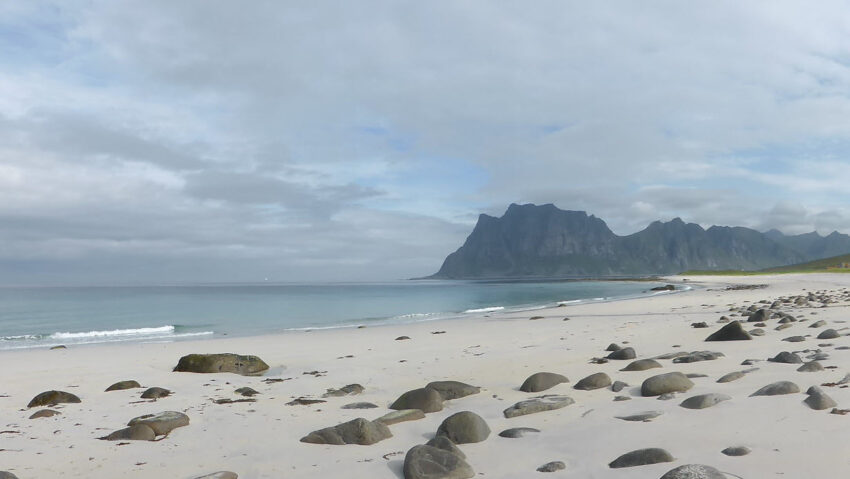
Let’s say you have to pick only one of the Lofoten Islands, then, which one is the best? Even though they all have their own wonders, many people will agree that Flakstadøy might be the best option.
Flakstadøy island
The village of Flakstadpollen lies on an overwhelming fjord, with sharp, rocky mountains towering and filling the landscape. It occasionally gets surrounded by mist and sea fog, the clouds colored in pink and orange shades by the evening sunlight. For experienced hikers, there are many high mountain routes around the fjord. Of course, for those with no hunger for adventures, a wide range of short walks awaits, along peaceful beaches and into foothills. The beachfront trail from Ytresand to Mulstøa is another perfect point to watch the midnight sun.
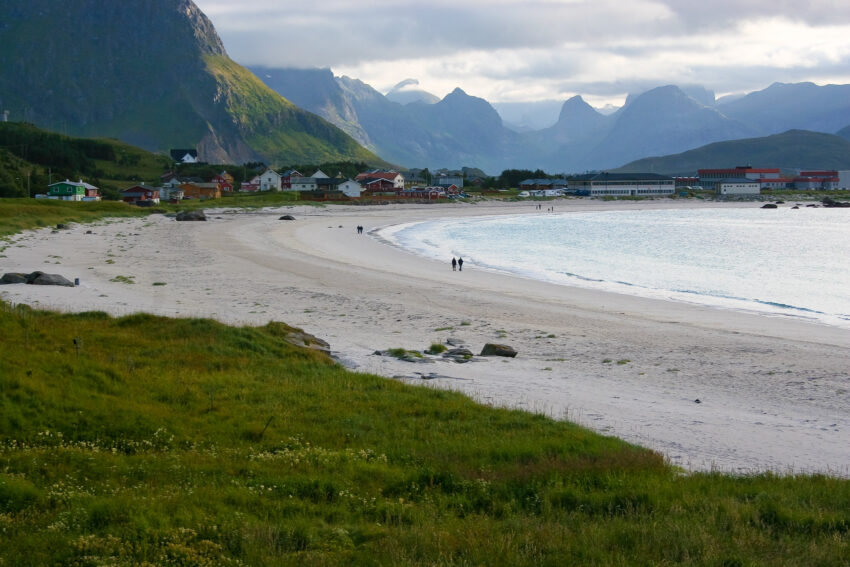
Nusfjord
To the south of Flakstadøy, a slightly more challenging path takes you from the small village of Nesland to Nusfjord. Nusfjord is a World Heritage Site, acclaimed many times as Norway’s best-preserved fishing village. Hidden from the open sea in the grey, sheer fjord, Nusfjord has a remarkable museum trail. Walk along the exhibit of old buildings associated with fishing activities, raging from boathouses to a sawmill, with drying cod skins hanging from rorbu roof edges. Then, a wooden walk takes you upwards, around a natural refuge with coffee shops at your service to refuel all that energy lost in the trails.
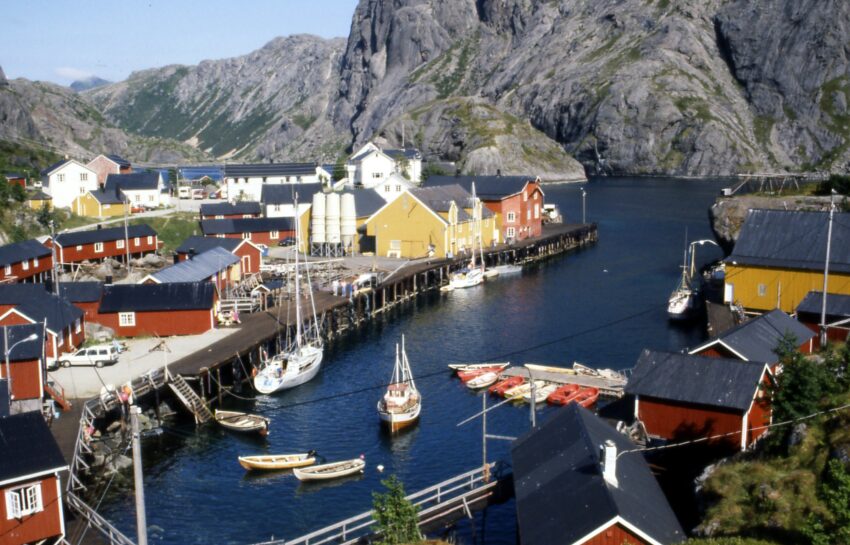
Hiking Munkebu
You can’t consider your trip to the Lofoten Islands complete if you don’t get to explore the high, towering mountains that stand out and dominate most of the scenery. An arduous yet marvelous trail starts at the village of Sørvågen and takes you all the way up to the mountain hut on Munkebu. The walk passes through a roaring waterfall until it arrives at Stuvdalsvatnet Lake, with its fishing lodges dotting the shore. The tough part starts once you round the lake, with only chain handrails as support on the ascending route, firm and secure but still leaving an uneasy feeling on your stomach.
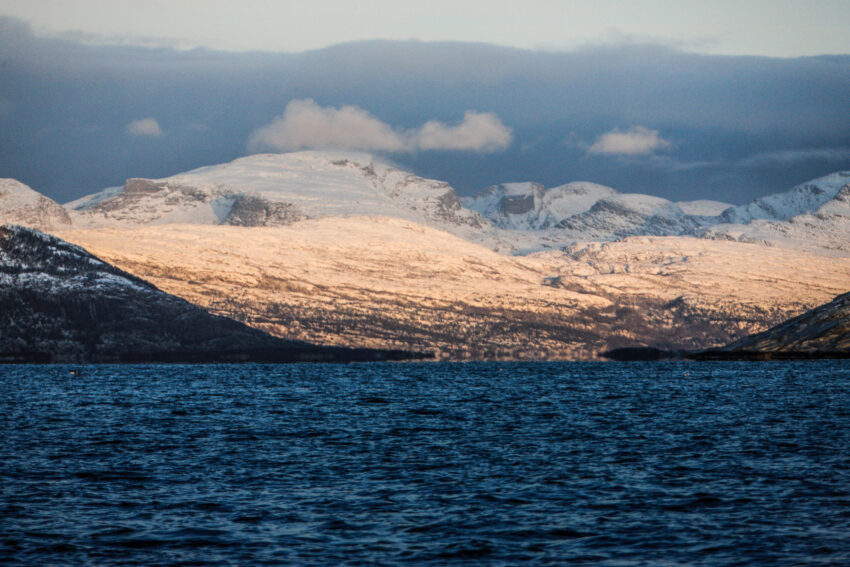
Once you get to the top, it doesn’t matter where you look, outstanding views will greet you everywhere, extending over glaciers shinning silver and blue tones, and high mountains lakes. To the east, hills pointedly cut down into Djupfjorden and out to the wide field of Vestfjorden, the latter separating the Lofoten Islands from the country. Beneath and away, fishing trawlers sail out from the dock, and to the front lies the Munkebu hut. Sitting at the terrace, the silence of the mountains and the low temperatures at this high latitude give you a hovering feeling of serenity.
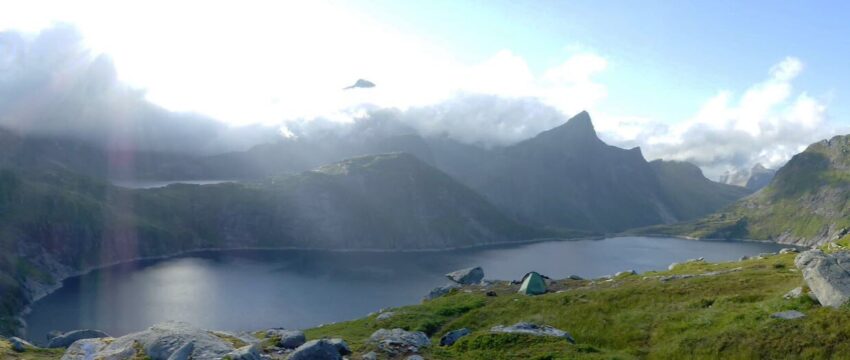
How to get there
Inntravel has flexible self-guided walking trips available to the Lofoten Islands, rented cars with Hertz and hiking maps included. First, SAS fly into Oslo, Norway’s capital, and from there to Bodo. From Bodo, a short 20-minute flight with Widerøe takes you to Leknes, on the main island of Vestvågøy.
In addition, Statles Rorbusenter in Mortsund offers rorbu settlement with modern comforts. While there is a good bus service on the islands, if you want a better experience and more flexibility to explore, I recommend you hire a car, as it is the best way to get around.
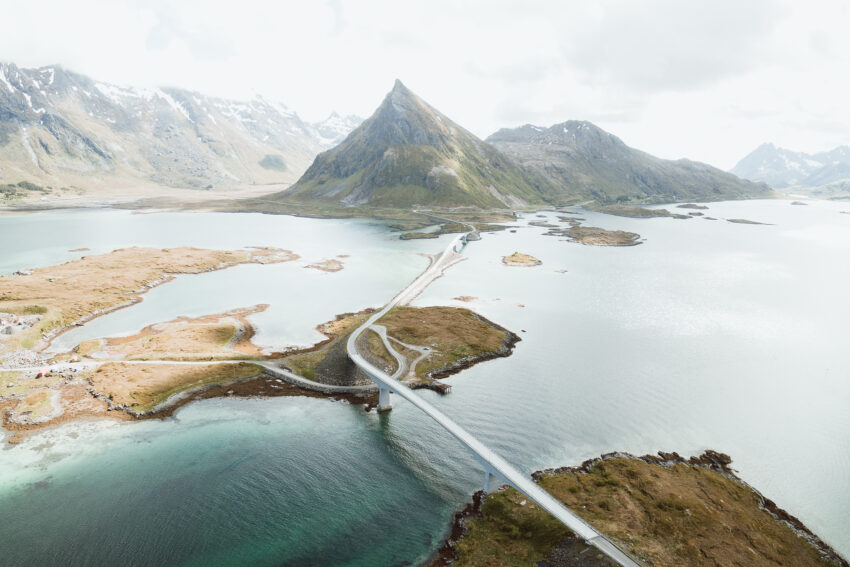
If you loved this article or found it useful, don’t forget to share it with your adventurous and travel-hacking friends! If you want more posts like this, follow us on Youtube, Instagram, Pinterest, Twitter or Facebook and subscribe to our newsletter!

